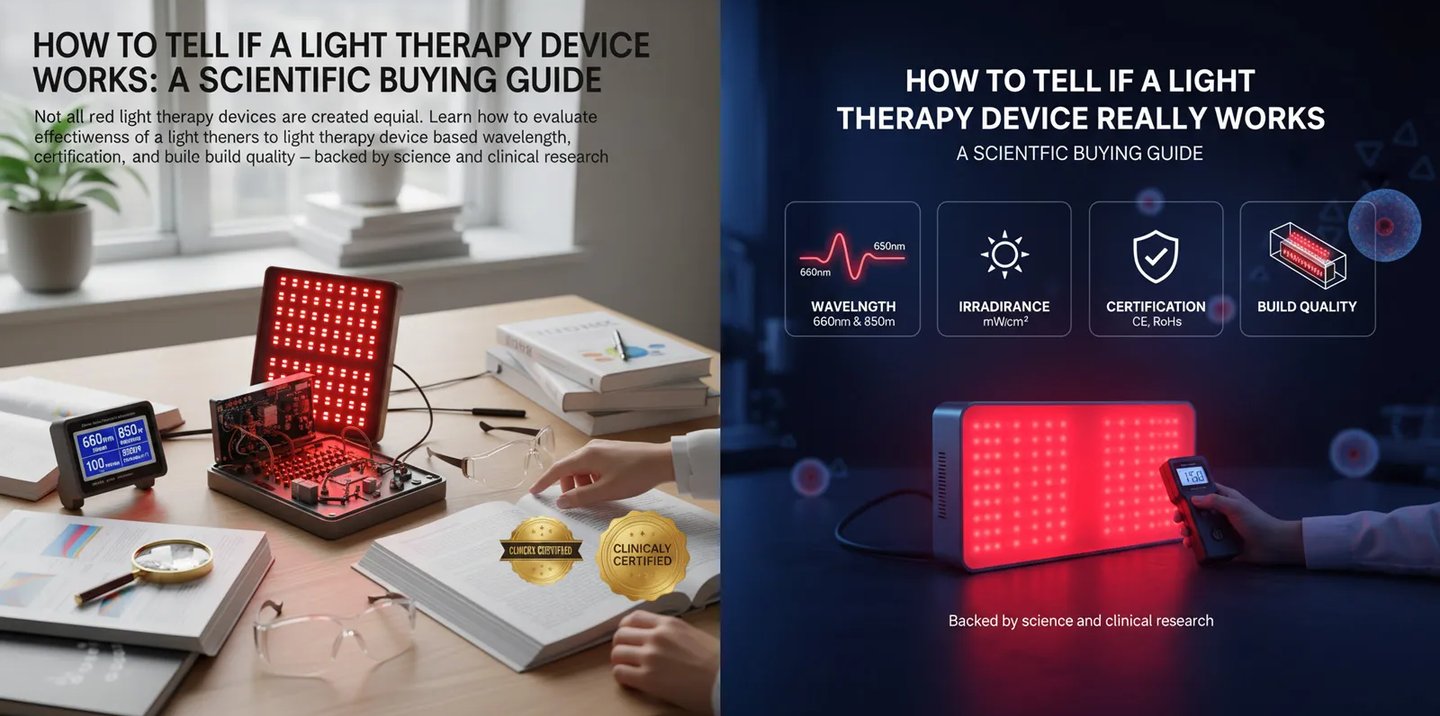Becoming the world's leading health appliance brand, bringing "professional physiotherapy home," and making a healthy life easily accessible.
How to Tell If a Light Therapy Device Really Works: A Scientific Buying Guide
Backed by science, this guide helps you choose an effective and safe device. Not all red light therapy devices are created equal. Learn how to evaluate the effectiveness of a light therapy device based on wavelength, irradiance, certification, and build quality — backed by science and clinical research.
PHOTOTHERAPY BASICS > POPULAR SCIENCE EDITION
YEEQO
11/5/20252 min read


Why Effectiveness Matters in Light Therapy Devices
As red light therapy and near-infrared therapy become more popular for skincare, recovery, and pain relief, countless products flood the market. But not all of them are scientifically effective.
To achieve real results, a light therapy device must meet key biological and technical standards proven by research. Investing wisely means understanding these crucial specs.
Key Factors to Determine Device Effectiveness
1. Correct Wavelength Range
The wavelength determines how deep the light penetrates and which tissues it affects.
Red Light (630–660nm): Stimulates collagen, reduces wrinkles, and improves skin tone.
Near-Infrared Light (810–850nm): Penetrates deeper layers to relieve pain, inflammation, and muscle stiffness.
✅ A truly effective device clearly lists the exact wavelengths it emits, within these proven therapeutic ranges.
2. Adequate Irradiance (Power Density)
Light intensity (**irradiance**) must be strong enough to trigger a biological response.
Optimal Irradiance: The ideal therapeutic range is generally 20–60 mW/cm².
Home Devices: 25–40 mW/cm² provides a safe yet powerful range for at-home use.
✅ Look for verified irradiance data — avoid vague terms like “high power” or “bright LEDs.”
3. LED Chip Quality and Light Distribution
High-quality LEDs ensure stable, consistent wavelengths and even coverage across the treatment area.
Prefer devices with medical-grade LEDs or CREE / Osram chips.
Ensure uniform light distribution without hot spots or dark zones.
4. Certifications and Safety Standards
For U.S. consumers, certification is a strong indicator of safety and efficacy:
FDA-cleared: Confirms medical-grade safety and performance.
IEC / UL Certified: Indicates electrical and photobiological safety.
CE and RoHS: Compliance with EU safety and environmental standards.
❌ Avoid devices without official certification — they may lack consistent quality or safety testing.
5. Real User Feedback and Clinical Data
User reviews and published studies are great validation tools.
Look for devices that share clinical results or are used in professional wellness centers — these are signs of authentic efficacy.
Conclusion: What Makes an Effective Light Therapy Device
To ensure you’re investing in a truly effective red light therapy device, check for:
Scientifically validated wavelengths (630–660nm / 810–850nm);
Power density between 20–60 mW/cm² (Irradiance);
Medical-grade LED components;
Verified FDA or international certifications;
Positive user reviews and clinical backing.
A scientifically designed and safety-certified device is the key to achieving real, visible results from light therapy.
YEEQO
© 2025 YEEQO Health Appliances. All rights reserved.
